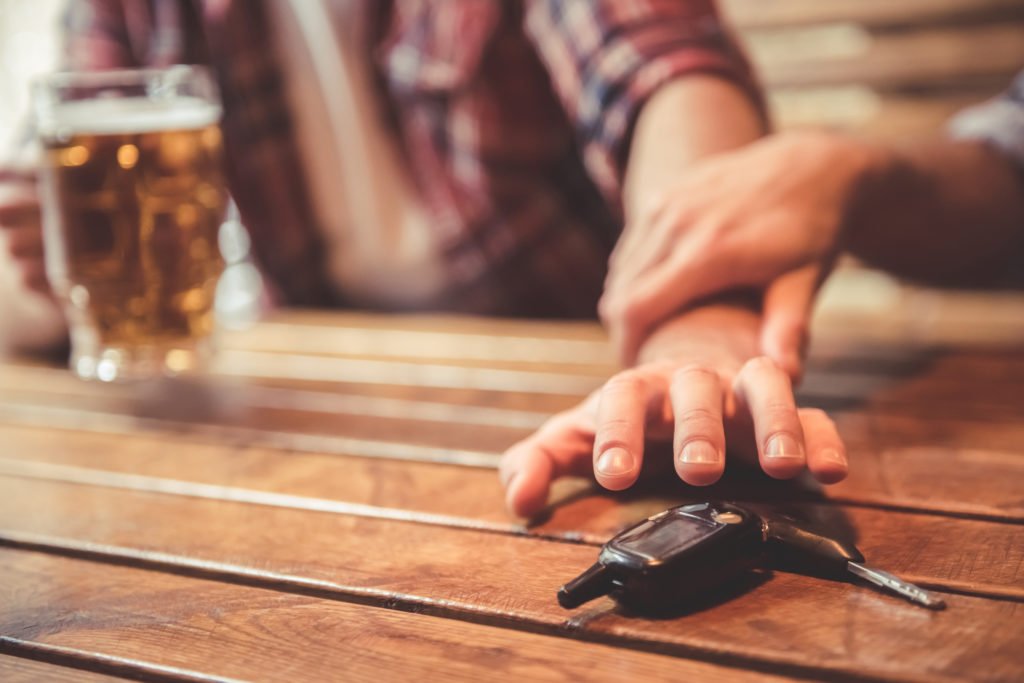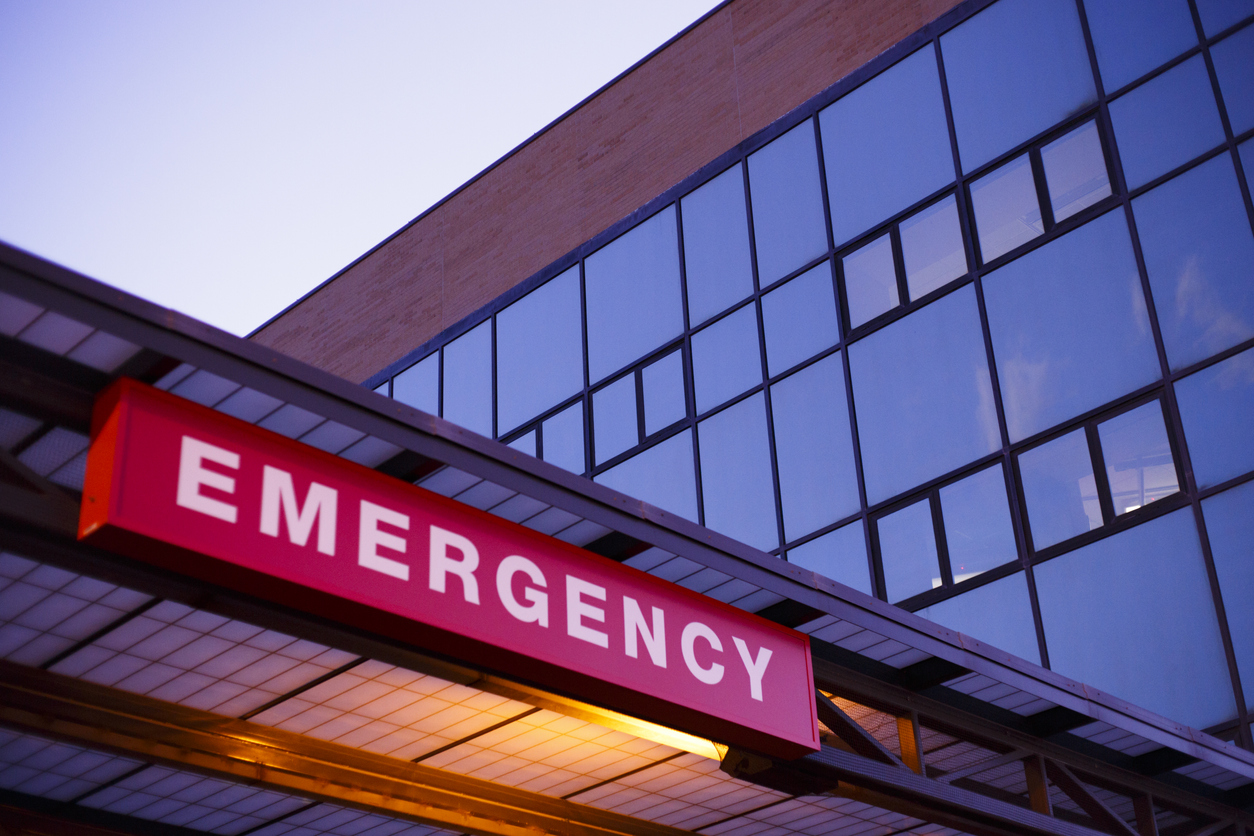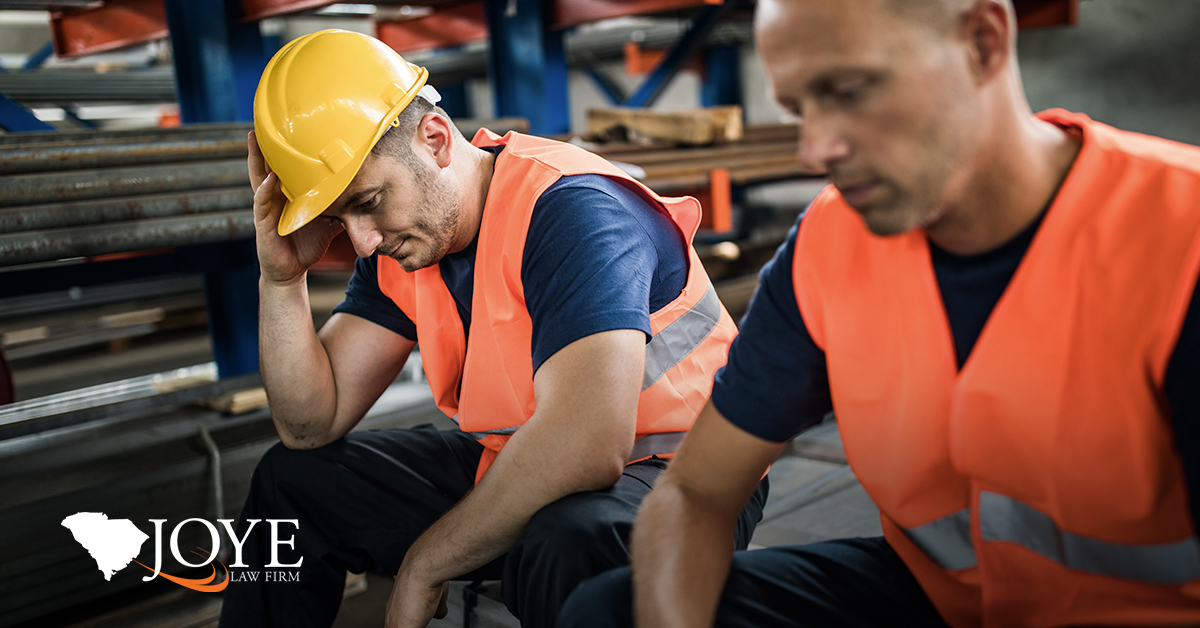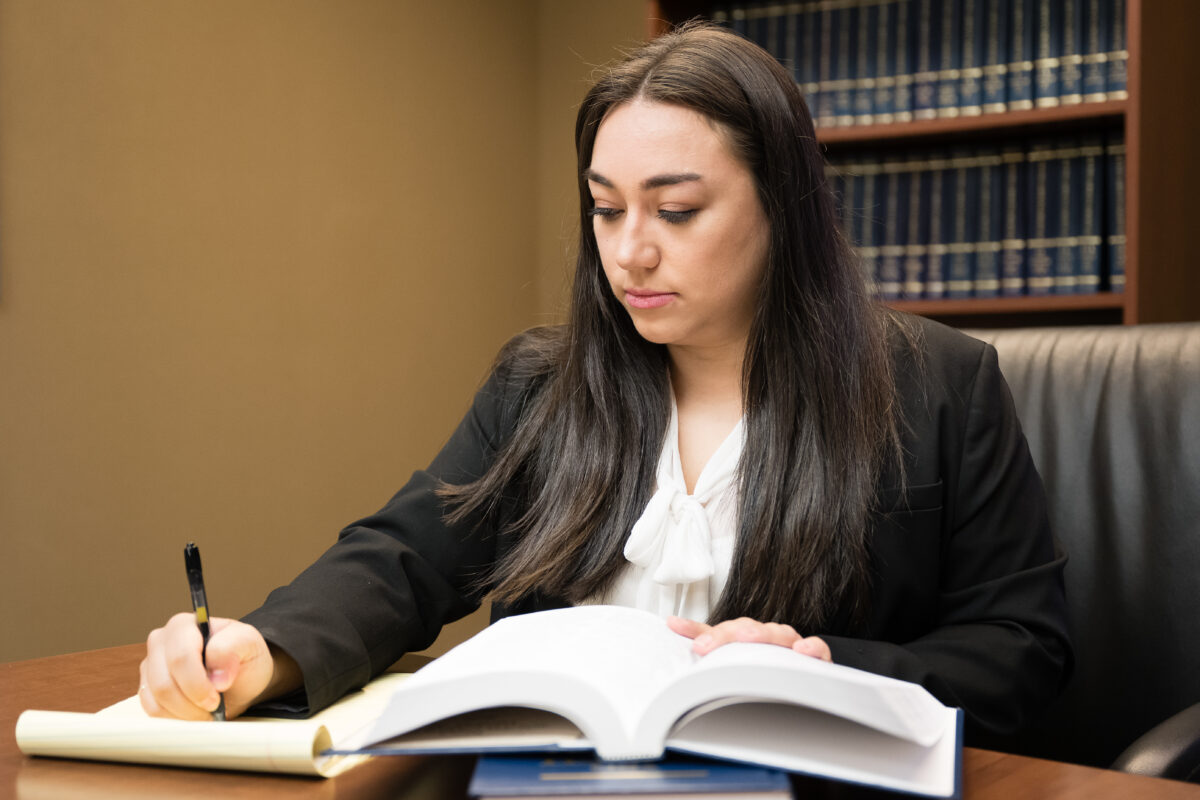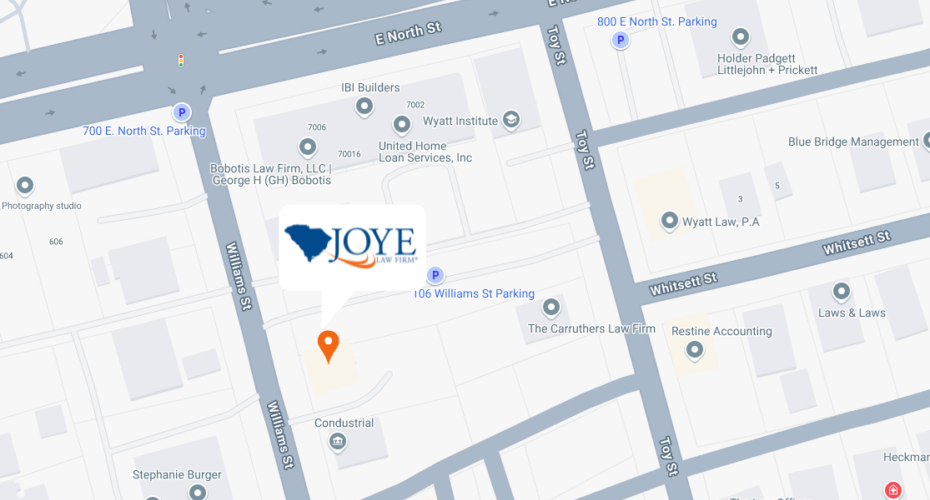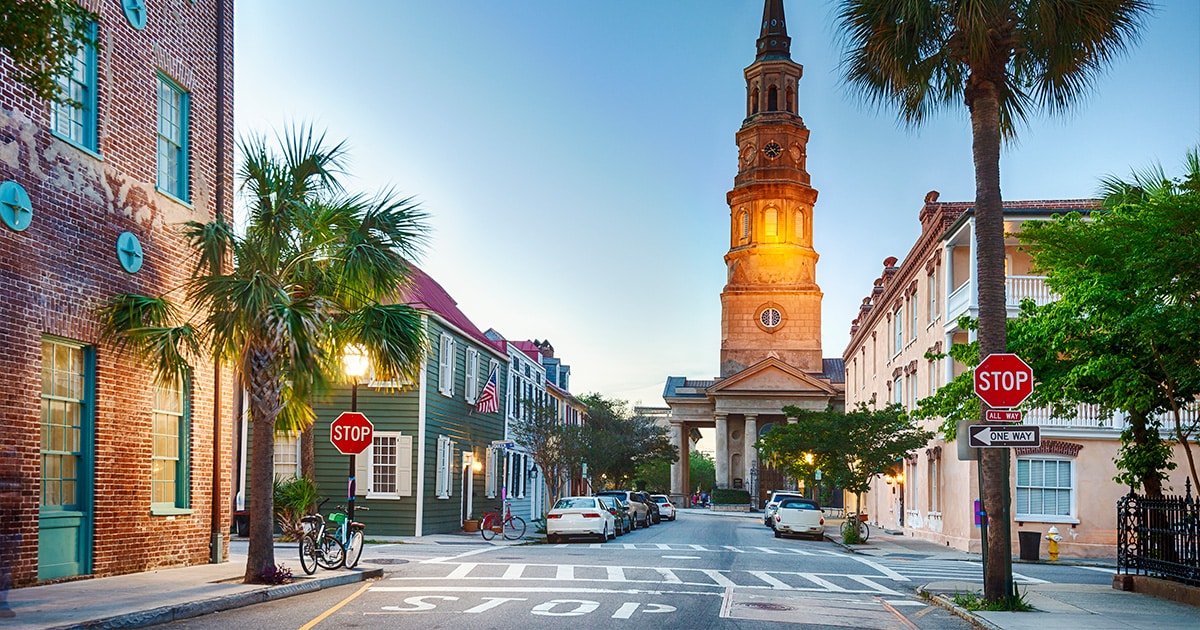
Columbia, South Carolina’s vibrant capital city, is home to nearly 140,000 residents and growing fast. Whether you’re a new mover or a long-time resident, being aware of the metropolitan’s most dangerous intersections can help you stay safe on the road. Unfortunately, even the most careful driver can wind up in a crash through no fault of their own. When that happens, a car accident lawyer in Columbia from Joye Law Firm can help you understand your legal options and pursue compensation.
What Factors May Create Dangerous Traffic Corridors in Columbia?
Known affectionately as Soda City, Columbia is home to the University of South Carolina, a thriving arts scene, numerous historical sites, and popular attractions like Riverbanks Zoo and Garden, drawing both locals and tourists alike. Its diverse economy includes healthcare facilities, a growing technology sector, and government institutions, including Fort Jackson, the U.S. Army’s largest initial entry training center.
As the city and surrounding suburbs continue to grow, so does traffic. High-volume commuter routes, areas around the university, and roads leading to popular destinations often experience congestion, potentially contributing to dangerous traffic patterns in certain areas of the city.
Most Dangerous Interstates in Columbia
In the latest Traffic Collision Fact Book, the South Carolina Department of Public Safety (SCDPS) reported 147,724 total traffic collisions in the state. Richland County, where Columbia is located, accounted for 12,731 or 8.6% of the state’s recorded collisions. Additionally, Richland County was ranked among the top five counties for fatal traffic collisions, with 65 fatal crashes and 2,868 collisions resulting in injuries.
Five Dangerous Highway Interchanges in Columbia
According to SCDPS, Columbia has several hot spots for traffic accidents including fatal and injury accidents. Here are five of the most dangerous intersections, based on recent data:
- I-20 at U.S. 176: This intersection tops the list with 199 total collisions, which resulted in one fatality and 67 injuries, including two serious injuries. The high volume of traffic merging from two major highways likely contributes to the frequency of crashes here.
- I-26 at U.S. 176: Another interchange between major highways, this intersection saw 195 collisions with 36 of those crashes injuring 60 people. The complexity of navigating multiple lanes and merging traffic makes this spot particularly hazardous.
- I-20 at SC 215: This intersection experienced 112 collisions with 31 of those accidents injuring 53 people and leaving one dead. The mix of high-speed highway traffic and local road users creates a dangerous environment.
- SC 12 at I-77: This intersection forms another hotspot for accidents, with 104 collisions, resulting in 38 injuries and one fatality. The transition between highway and local road speeds may increase the collision rate.
- I-20 at I-26: This major interchange, known locally as “Malfunction Junction,” sits right at the geographic center of the Palmetto State’s interstate system and handles both local Columbia traffic and regional traffic headed to Greenville and Charleston. It experienced 91 collisions, including two fatal collisions, one serious injury collision, and 14 other crashes that injured 22 people. The convergence of two busy interstates creates a challenging driving environment. To address ongoing safety concerns, the SCDOT has implemented the third phase of improvements, permanently closing the westbound I-26 off-ramp to Bush River Road as of November 10, 2024. For further updates, view the Carolina Crossroads Project traffic alerts.
Dangerous Surface Street Intersections in the Midlands
While these highway interchanges had the most reported injuries, other areas in and around Columbia raise concerns. The SCDPS identified 13 high-crash corridors in the Columbia area, including stretches of Broad River Road, Two Notch Road, and Farrow Road. Some of the riskiest include:
Zimalcrest Drive and Broad River Road
The new data specifically mentions this intersection as part of a high crash rate corridor. The data states that Broad River Road from St. Andrews Parkway to GameStop at 1725 Broad River Road is one of the most dangerous traffic corridors in the Columbia area.
Leisure Lane and St. Andrews Road
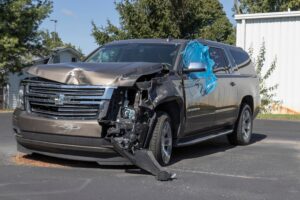
St. Andrews Road is close to the Broad River Road corridor mentioned above, so it may experience some spillover traffic issues. Additionally, the intersection between St. Andrews Road and Leisure Lane, located just eight miles northwest of downtown is one of the fastest-growing areas of the Midlands.
Leisure Lane splits into three one-way accesses into St. Andrews Road marked with stop and yield signs. This intersection is located near a railroad crossing, increasing the risk of being involved in a traffic accident and a train collision.
Two Notch Road and South Lake Drive
This intersection in Red Bank, SC, about 11 miles southwest of downtown Columbia, includes South Lake Drive on the north-south axis and Two Notch Road on the northeast-southwest axis. Both four-lane roads see dense traffic seven days a week. Two Notch Road is identified as a high crash rate corridor in multiple sections:
- Two Notch Road from I-20 East overpass to Parklane Road
- Two Notch Road from Atrium Way to Greengage Park Road
- Two Notch Road and Decker Boulevard
Two Notch Road appears multiple times in the list of dangerous corridors, indicating a high-risk area for traffic collisions.
Augusta Road and Woodberry Road
Augusta Road is part of U.S. Highway 1. The four-lane highway, with two lanes in each direction, travels through most of the Columbia metropolitan area. Augusta Road intersects with Woodberry Road to the north and a railroad crossing to the south at Waiting Road to the south. SCDPS considers most of Augusta Road a high-collision corridor.
Different speed limits between Augusta Road and the intersection’s other branches, combined with a railroad on the south end, can increase the risk of traffic accidents.
Augusta Road and Oak Drive
This intersection is located on the same collision corridor as Augusta Road and Woodberry Road, just a few miles to the west. At this location, U.S. Highway 1 intersects with Oak Drive, another four-lane street to the north. It also intersects with Church Road to the south and has red lights on all four corners.
Assembly Street and Gervais Street
The intersection of Assembly Street and Gervais Street, located in downtown Columbia, sees a mix of busy commuter, local, and tourist traffic. The proximity to major attractions such as the South Carolina State House increases traffic volume.
This challenging intersection’s six-lane configuration and frequent lane changes result in many side-impact collisions and pedestrian accidents, often due to drivers running red lights and not paying attention to crosswalks.
Garners Ferry Road and Rosewood Drive
Garners Ferry Road and Rosewood Drive in southeast Columbia is particularly dangerous due to its proximity to several schools, including the University of South Carolina, and heavy pedestrian and vehicular traffic. Speeding and distracted driving in this area lead to frequent collisions.
Hard Scrabble Road and Clemson Road
Hard Scrabble Road and Clemson Road, located in the northeastern part of Columbia, have seen significant development in recent years. The increase in residential and commercial properties has led to higher traffic volumes.
This intersection is particularly dangerous due to the mix of local and through traffic, frequent lane changes, and drivers running red lights. The South Carolina Highway Patrol has identified this intersection as a high-risk area for accidents, especially during rush hours.
Why Are These Intersections Dangerous?
Several factors contribute to the high accident rates at these and other intersections:
- High Traffic Volume: Many of these intersections are located in areas with heavy traffic volumes, including commuter and commercial traffic, and pedestrian activity.
- Complex Intersection Design: Intersections with multiple lanes, turning lanes, and complex traffic signal patterns can be confusing for drivers especially tourists, leading to accidents.
- Speeding and Aggressive Driving: Speeding and aggressive driving behaviors, such as running red lights and making improper turns, are common causes of accidents at these intersections.
- Distracted Driving: The prevalence of distracted driving, particularly due to mobile phone use, contributes significantly to crashes in these areas.
- Pedestrian Activity: Intersections near schools, universities, and commercial areas often see high pedestrian traffic, increasing the risk of pedestrian-vehicle collisions.
- Drunk Driving: South Carolina has the 3rd highest fatality rate from crashes involving drunk drivers in the nation along with ranking 6th in the U.S. for drunk driving accidents caused by underage drinking. Columbia had 35 estimated fatalities involving an alcohol-impaired driver in 2022, according to the South Carolina Department of Public Safety.
For pedestrians, some of the most dangerous Columbia intersections include:
- Two Notch Road: 48 accidents, including 12 pedestrian deaths
- Broad River Road: 35 accidents, including 7 pedestrian deaths
- Farrow Road: 26 accidents including 5 pedestrian deaths and 1 cyclist death
- Fairfield Road: 8 accidents, including 6 pedestrian deaths
Does Time of Day Affect Intersection Crashes?
According to Google Maps traffic data, the densest concentrations of vehicles occur during the following periods:
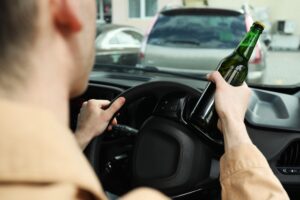
- In the morning, from 7 a.m. to 9 a.m.
- Throughout the afternoon, from noon to 5 p.m.
- During the evening, from 5 p.m. to 9 p.m.
These periods correspond to typical rush hour periods, during which the risk of an accident increases. According to the National Safety Council (NSC), the highest number of fatal traffic accidents by time of day occur from 4 p.m. until midnight.
The data shows that most crashes in these high-risk corridors occur between 3:01 p.m. and 6:00 p.m. (25% of accidents), with Monday through Thursday accounting for 48.82% of weekly crashes.
Tips to Stay Safe While Driving in the Midlands
Drive safely wherever you travel in Columbia, not just in the city’s most dangerous intersections. Given the unique blend of university traffic, government workers, and tourist attractions, navigating Columbia’s streets requires extra attention. Here are some essential tips to help you stay safe while driving in South Carolina’s capital city:
- Be extra cautious during rush hour, late night, and early morning hours, especially on weekdays
- Pay close attention when navigating highway interchanges and transitions to local roads
- Always follow traffic laws, including speed limits and proper lane usage
- Stay alert for pedestrians, especially in areas known for high foot traffic
- Consider alternative routes that avoid these high-risk intersections when possible
Contact Joye Law Firm if You’ve Been Injured in a Columbia Crash
While this information can help you be more aware, you can’t always avoid a collision if other drivers aren’t paying attention or following safe driving practices. If you’ve been injured in a car accident at one of these dangerous intersections or anywhere else in the Midlands, don’t navigate the complex legal process alone.
The personal injury lawyers in Columbia at Joye Law Firm are here to help. With over 300 years of combined experience handling auto accident and personal injury claims, our team has the knowledge and dedication to protect your rights and pursue the compensation you deserve. Our team has helped tens of thousands of injured South Carolinians pursue the justice and compensation they deserve –see what they have to say about their experience with Joye Law Firm.
Contact our law firm today for a free case review and let us put our knowledge to work for you. Call our Columbia office at 888-324-3100 or contact us online.




